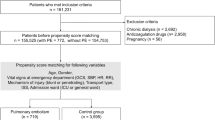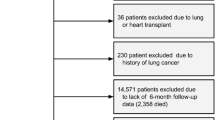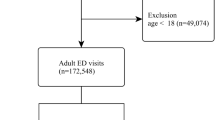Abstract
Objective:
To report and discuss the case of an incomplete paraplegic patient who died of pulmonary embolism (PE) aggravated by manual muscle testing.
Setting:
Acute spinal ward, Maharaj Hospital, Chiang Mai, Thailand.
Case report:
A 79-year-old man suffering from chest trauma, fractured ribs and a fracture of T11 with incomplete paraplegia, American Spinal Injury Association impairment scale D. Intercostal tubes were inserted at both sides due to haemothorax. Ten days after onset, T9 to L2 posterior instrumentation was successfully completed. A week after the operation, he was allowed to stand on a tilt-table and a rehabilitation specialist was consulted to assess and plan to encourage ambulation. After manual muscle testing of the right hip flexors and knee extensors, the patient suffered from a short period of unconsciousness and breathlessness. Electrocardiography showed right bundle branch block and a drop in oxygen saturation from 98 to 70%. After oxygenation with mask and bag, oxygen saturation increased to 90%. PE or acute myocardial infarction was suspected. After insertion of an endotracheal tube, the patient went into cardiac arrest. Cardiopulmonary resuscitation failed. The autopsy revealed large and small thromboemboli in both lungs, particularly in the pulmonary artery.
Conclusion:
Strong hip and knee muscle contractions during manual muscle testing were suspected of triggering massive pulmonary emboli from the proximal vein of the right leg of a paraplegic patient who had functional motor movements and did not receive any thromboembolic prophylaxis which caused unexpected fatal pulmonary emboli. Screening of venous thromboembolism risks and its symptoms/signs before mobilisation is mandatory.
Similar content being viewed by others
Log in or create a free account to read this content
Gain free access to this article, as well as selected content from this journal and more on nature.com
or
References
National Clinical Guideline Centre-Acute and Chronic Conditions (UK). Venous Thromboembolism: Reducing the Risk of Venous Thromboembolism (Deep Vein Thrombosis and Pulmonary Embolism) in Patients Admitted to Hospital. Royal College of Physicians (UK): London, UK. 2010.
Maung AA, Schuster KM, Kaplan LJ, Maerz LL, Davis KA . Risk of venous thromboembolism after spinal cord injury: not all levels are the same. J Trauma 2011; 71: 1241–1245.
Pulido L, Grossman S, Smith EB, Joshi A, Purtill JJ, Parvizi J et al. Clinical presentation of pulmonary embolus after total joint arthroplasty: do size and location of embolus matter? Am J Orthop (Belle Mead NJ) 2010; 39: 185–189.
Frisbie JH, Sharma GV . Right bundle branch block as a screening test for pulmonary embolism in chronic spinal cord injury. Arch Phys Med Rehabil 2009; 90: 1241–1244.
Author information
Authors and Affiliations
Corresponding author
Ethics declarations
Competing interests
The authors declare no conflict of interest.
Rights and permissions
About this article
Cite this article
Kovindha, A., Kammuang-lue, P. Pulmonary embolism after manual muscle testing in an incomplete paraplegic patient: a case report. Spinal Cord 52 (Suppl 3), S6–S7 (2014). https://doi.org/10.1038/sc.2014.121
Received:
Revised:
Accepted:
Published:
Issue date:
DOI: https://doi.org/10.1038/sc.2014.121



